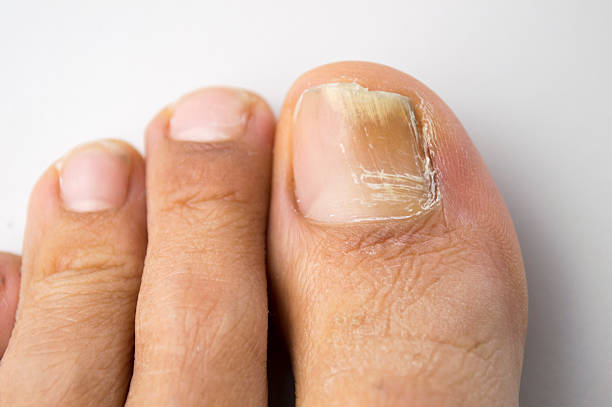
What Do Your Nails Tell You About Your Health
Imagine your fingernails as tiny billboards displaying coded messages about your well-being. It’s true, your nails can tell a tale about what’s happening inside your body. But it’s not about becoming a detective overnight or worrying at every tiny change. I’m going to illustrate why paying attention to your nails can be a smart move for catching health issues early.
Your nails are like a window to your internal health, often reflecting nutritional deficits, systemic diseases, or just the need for a little more self-care. I’m here to help you understand these subtle hints so you can be proactive about your health without feeling overwhelmed. After all, we’re not just talking about cosmetics here—it’s an issue of wellbeing.
Throughout this read, remember I’m not here to replace a visit to your healthcare professional. I want to equip you with knowledge, so you can have informed discussions with them. We’ll start with what nail pitting may indicate about your overall health and how to approach it without undue stress. Ready? Let’s give those nails a closer look.
Understanding Nail Pitting: Small Signs with Big Meanings
I’m going to paint a picture for you: Ever noticed tiny dents in your fingernails—almost like the surface of a thimble? That’s nail pitting, and it’s more than just a cosmetic issue. It’s like your body is sending a subtle SMS, signaling that something might be up with your health.
Nail pitting can appear as small depressions in the nail surface. It’s commonly associated with psoriasis, an inflammatory condition that affects the skin and joints, but it doesn’t stop there. Other conditions, such as alopecia areata, which causes hair loss, or eczema, might also bring about these pitted patterns.
So this begs the question: when should you actually worry? A few pits don’t necessarily spell disaster. But if you notice a sudden increase in number or depth, it’s a good idea to ring up your healthcare provider. To give you the best advice, they might look at your health history, check for other symptoms, and occasionally, refer you to a dermatologist for a closer look.
In the following section, you’re going to find out about another nail condition that often flies under the radar: nail clubbing. It’s a slow and subtle change that could point to issues you definitely wouldn’t want to brush off.
Just remember: while your nails are small, they can tell a mighty health story. Keeping an eye on them is a simple—yet vital—health check you can do right at home.
The Curve Outward: Recognizing Nail Clubbing
When you look at your fingers, you might notice a subtle change that’s easy to miss if you’re not paying attention. I’m going to talk about nail clubbing, a condition where your nails curve around the tips of your fingers like the back of a spoon. Sounds strange, doesn’t it?
This isn’t just random; nail clubbing can be a silent announcer of deeper health issues. It’s often associated with chronic lung diseases, heart disease, and even gastrointestinal disorders. The nails giving this rounded appearance happens over time, so it’s a gradual process that calls for a sharp eye.
If your nails start to look more curved than usual, and you can’t see the nail beds the way you used to, that’s going to include a visit to your healthcare provider. A thorough check-up might be in order, because spotting nail clubbing early could make a significant difference in managing potential underlying conditions.
While nail clubbing itself isn’t painful or harmful, what it signifies could be critical. You’re going to find out about the necessity of acting swiftly and not dismissing such changes as mere quirks of your body.
After discussing the peculiar outward curve of nail clubbing and its possible health indications, it’s time to move to another nail condition that carries a very distinct shape – ‘spoon nails’ or koilonychia. Just like nail clubbing, these nail changes may be hinting at something beneath the surface that warrants attention.
When Nails Resemble Spoons: The Indicator of Spoon Nails
Have you ever noticed your nails taking on a bit of a concave shape, almost like tiny spoons? This condition is known as koilonychia or ‘spoon nails’, and it’s not just a quirky feature. Spoon nails can dip enough to hold a drop of water, and while they might seem harmless at first, they could be signaling that something’s not quite right.
Beyond being an unusual nail shape, spoon nails can often point to iron deficiency anemia. This condition happens when your body doesn’t have enough iron to produce the hemoglobin it needs to keep your blood healthy. And guess what? Your nails are giving you a visual cue about it.
But it’s not all about lacking iron; spoon nails can indicate other health issues, too. They’ve been associated with heart disease and hypothyroidism among other conditions. That’s why noticing this change in your nails is a good reason to touch base with a healthcare provider. They might suggest blood tests or other diagnostic measures to get to the bottom of it.
In the meantime, taking a look at your diet is a smart move. Iron-rich foods like spinach, red meat, and lentils could be welcome additions to your meals if an iron deficiency is suspected. Supplements are also an option, but you’ll want to discuss this with a professional first to make sure you’re taking the right type and amount.
After delving into the world of spoon nails, the conversation naturally turns to nail separation or onycholysis, another condition that can cause nails to act as an alarm bell for your health. Stay tuned as I guide you through understanding nail separation, its causes, and how to approach it.
Addressing the Peel: Nail Separation and Its Implications
Nail separation, or onycholysis, is when your nail plate becomes detached from the nail bed. It’s not as rare as you might think and can indicate several underlying health issues or just be the result of trauma or prolonged exposure to water.
Initially subtle, onycholysis may present itself as an increasing white area on the nail as the separation begins. It might seem harmless at first, but if left unchecked, it can lead to complications, such as infection, particularly fungal.
Among the health concerns indicated by nail separation are thyroid diseases, such as hyperthyroidism, as well as reactions to certain medications or chemicals. Psoriasis, an autoimmune skin condition, can also manifest in your nails in this way.
So, what do you do if you notice your nail starting to lift away from its bed? First, don’t panic. Start by gently trimming off the detached nail to prevent it from snagging, which could cause further damage. Then, keep the nail clean and dry.
Remember, while proper nail care can prevent many nail conditions, if you’re seeing persistent onycholysis, seek advice from a healthcare professional to identify the root cause and appropriate treatment. Keep in mind that many nail changes can be subtle, so early consultation could be key to preventing more serious issues.
Caring for Your Fingernails: Do’s and Dont’s for Optimal Health
Caring for your nails is more than just a matter of aesthetics; it’s a way to keep an eye on your body’s overall well-being. I’m here to help you understand how a few simple practices can go a long way in maintaining healthy fingernails.
One of the best things you can do for your nails is to keep them clean and dry, preventing bacteria from taking up residence under your nail bed. This means wearing gloves when you’re washing dishes or cleaning around the house.
Moisturize your nails and cuticles regularly, especially if you tend to have brittle or dry nails. This can prevent them from becoming too tough and prone to cracking or splitting.
It’s also important to clip your nails straight across and gently file down sharp edges. Opt for a proper nail cutter or a file over biting your nails, which can lead to a host of issues including misshapen nails and even infection.
Be cautious of too much exposure to harsh chemicals, including some nail polish removers that can weaken the nails. Use acetone-free removers whenever possible.
If you love manicures and pedicures, choose a reputable salon that maintains high hygiene standards and avoid having your cuticles cut too often or too much, as they serve as barriers to protect your nails.
Now, here are some don’ts that are just as crucial. Don’t ignore persistent nail problems. If you come across changes or something that just doesn’t look right, it’s best to get it checked out by a healthcare provider.
Don’t use your nails as tools to pick or pry things open as this can cause them to break or splinter. And, if you’ve been sporting artificial nails and notice any unusual symptoms, give your natural nails some time to breathe.
In my opinion, well-cared-for nails are happy nails. Your first attempt at optimizing nail health doesn’t need to be your last. You can always adjust your approach down the road. Just don’t focus too much on perfection; the goal is to maintain nails that signify good health and feel right to you.
I really hope that you’ve found this guide to be helpful. Nail health doesn’t need to be complicated, but it certainly deserves attention. Pay attention to your nails, and they might just point you in the direction of good health.


